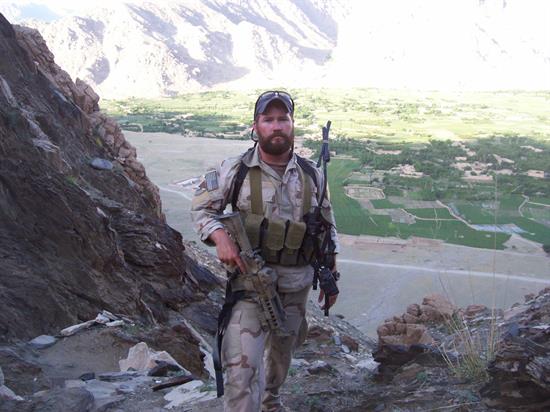Northeast Florida Republican Congressman Michael George Glen Waltz (born January 31, 1974), is the new chair of the House Readiness Subcommittee on the House Armed Services Committee (HASC). The first Green Beret to serve in Congress, Rep. Waltz lives in St. Augustine Beach and represents parts of St. Johns County, Flagler, Volusia and Lake County. He is a combat-decorated retired Colonel and former Pentagon and White House policy adviser.
Congratulations, Mr. Chairman!
As of 1:41 PM this afternoon, Rep. Waltz's now-outdated website still says he is "Ranking Member" of the Readiness Subcommittee. The website states that "The Readiness Subcommittee is responsible for the single largest account within DOD’s budget. It oversees military readiness, training, logistics and maintenance issues and programs, military construction, installations and family housing issues, and the BRAC process. It also oversees civilian personnel, energy security, and environmental issues that affect DOD. The Readiness Subcommittee makes sure that our troops are properly trained and their equipment is properly maintained so they can succeed in their missions, and that they have the facilities and services they deserve when they return home."
As they say in the Army, "Hoo-ah!"
Army Times reports about the Green Berets:
“Quiet Professionals.” “Snake Eaters.” “Soldier-Diplomats.” “Bearded Bastards.”
U.S. Army Special Forces are known by a variety of nicknames, but their exclusive right to wear the Green Beret was not recognized until nearly a decade after their formation.
Founded in 1952 as part of the U.S. Army Psychological Warfare Division, the 10th Special Forces Group was the first of its kind, according to Army archives.
It was named the tenth group to make the Soviets think there were at least nine others just like it, Anne Jacobsen wrote in her book “Surprise, Kill, Vanish.” The Army’s mission was to create and maintain a force to conduct unconventional warfare. The skills required to do so, however, she notes, were not. To work by, with and through guerrilla fighters to accomplish the wide range of missions Special Forces are tasked to carry out, these elite soldiers had to become jacks-of-all-trades.
Special Forces’ founder, Col. Aaron Bank, was selected as the man for the job. Bank had been the leader of an Office of Strategic Services Jedburgh Team, a small, highly-trained team designed to gather intelligence and conduct raids and resupply missions with local guerrilla forces during World War II.
Much of the idea for what Bank later called “the unit with the greatest combat potential in the Armed Forces” in the 10th Special Forces yearbook came from this time in the OSS. His Jedburgh Team trained in parachuting, foreign languages, hand-to-hand combat, radio operations, and a host of other specialized skills, and as a result, his new Special Forces team would too.
Wanting to distinguish themselves from conventional Army forces, Special Forces soldiers selected the wear of the beret because of OSS influence, since a number of its teams adopted headgear worn by soldiers in France. And the color green came from the influence of British Commandos during World War II.
However, because green berets were not officially authorized by the U.S. Army, they were only worn in the field and not in garrison.
The berets continued to be Special Forces’ unofficial headgear until then-President John F. Kennedy made it official, stating in a 1962 official memo that the cap had become a “symbol of excellence, a badge of courage, a mark of distinction in the fight for freedom.”
And that’s just what they are today. Perhaps most popularly known now as Green Berets, Army Special Forces soldiers are still regularly deployed around the world for combat and training missions.
Currently, the Army has seven special forces groups in total: five are active duty, and two are in the National Guard.
Since Kennedy’s death in 1963, Green Berets lay a wreath on his grave annually to recognize the role he played in making the nation’s unconventional warriors what they have become.
And that’s just what they are today. Perhaps most popularly known now as Green Berets, Army Special Forces soldiers are still regularly deployed around the world for combat and training missions.
Currently, the Army has seven special forces groups in total: five are active duty, and two are in the National Guard.
Since Kennedy’s death in 1963, Green Berets lay a wreath on his grave annually to recognize the role he played in making the nation’s unconventional warriors what they have become.
Harm Venhuizen is an editorial intern at Military Times. He is studying political science and philosophy at Calvin University, where he's also in the Army ROTC program.


:quality(70)/cloudfront-us-east-1.images.arcpublishing.com/archetype/KWO6JINYVNAIRIC5EWNNIT7E54.jpg)
Alright. Let's go to Zimbabwe and confiscate a diamond mine using tanks and sophisticated weaponry. The proceeds from the theft will of course go to someone who is already rich, and anyone who participated in the operation will return stateside and of course get nothing including medical care. There just might be a job waiting tables or in retail for the heroes, but you never know.
ReplyDelete